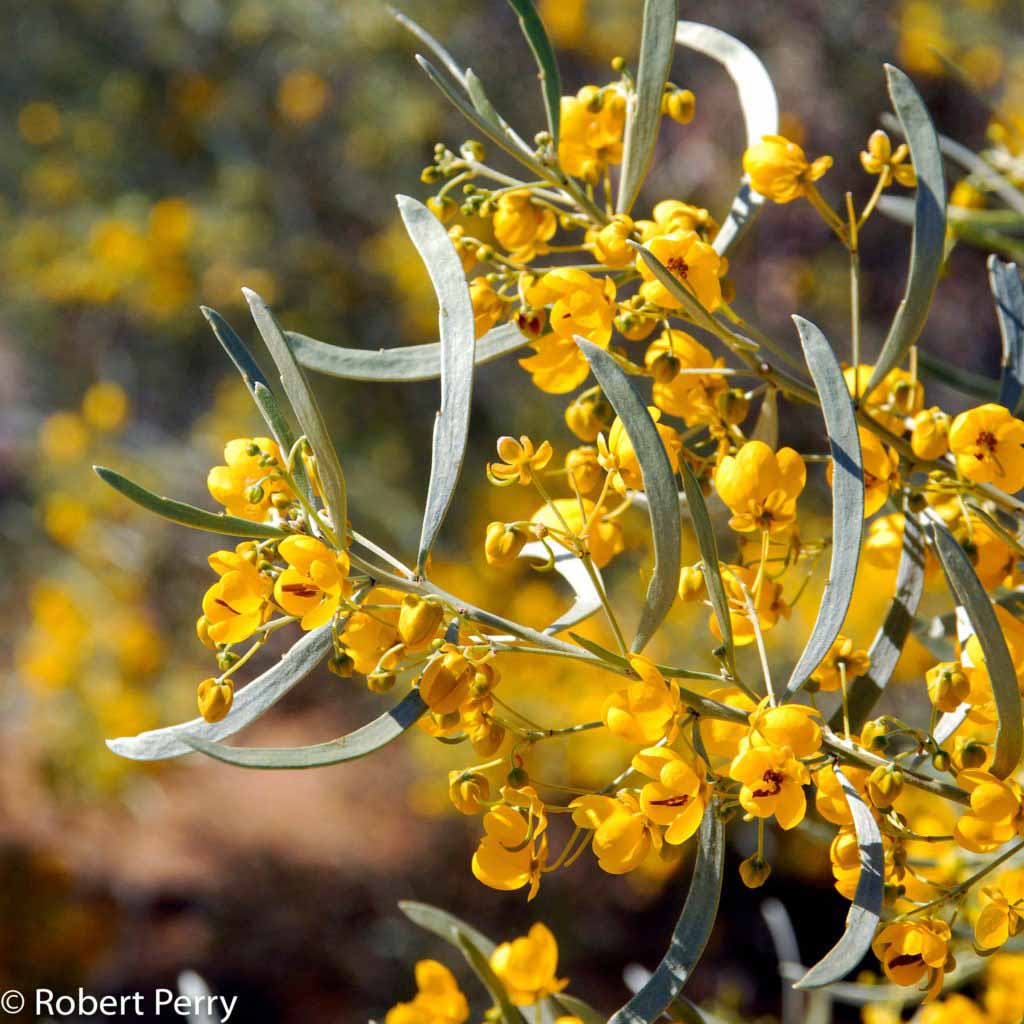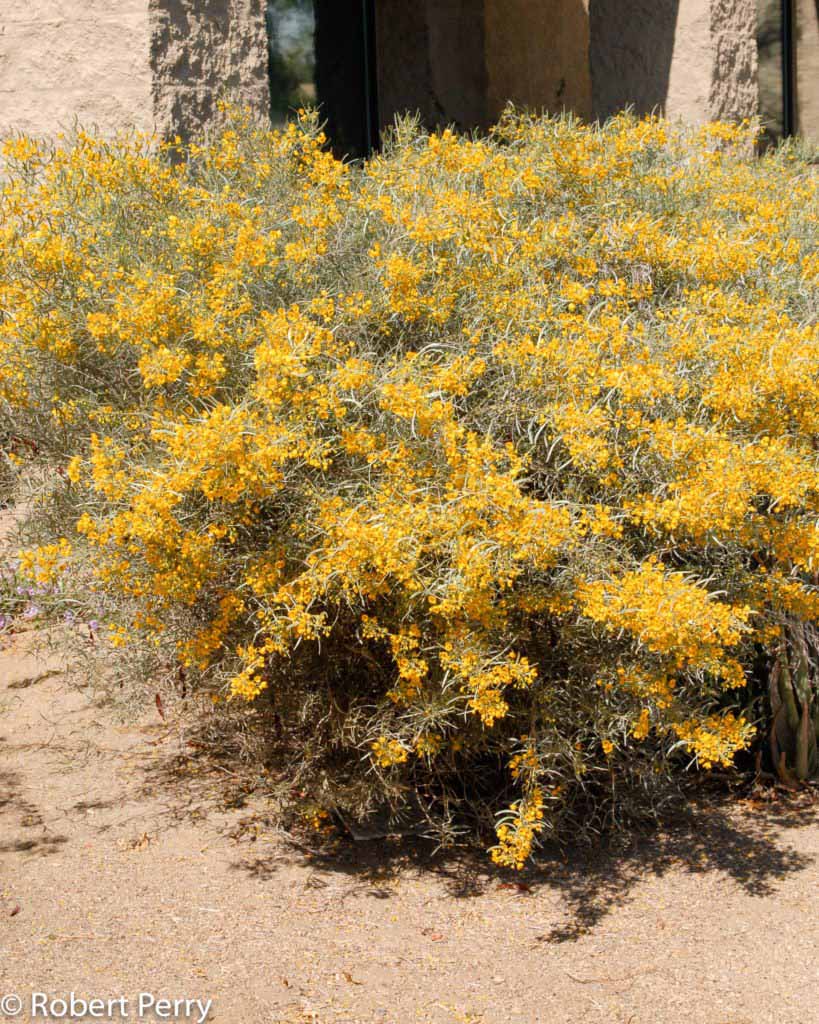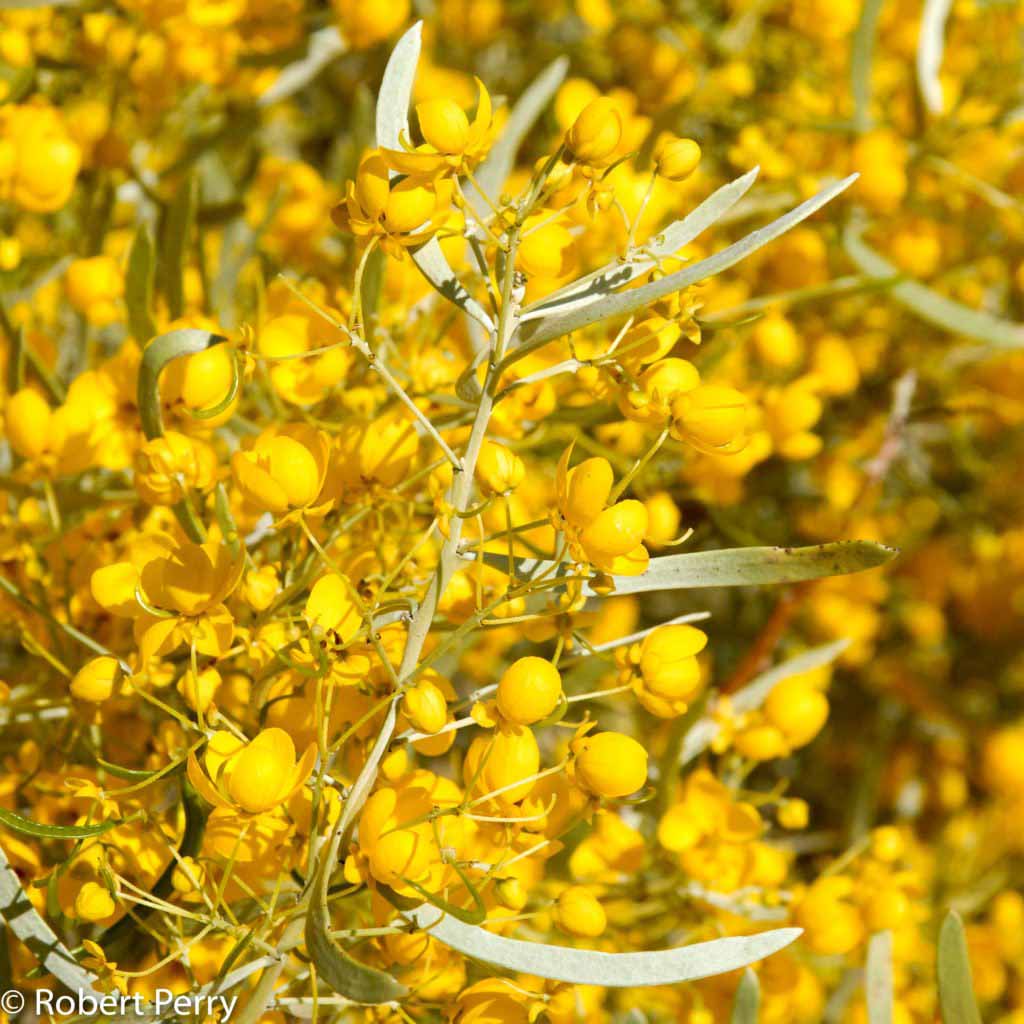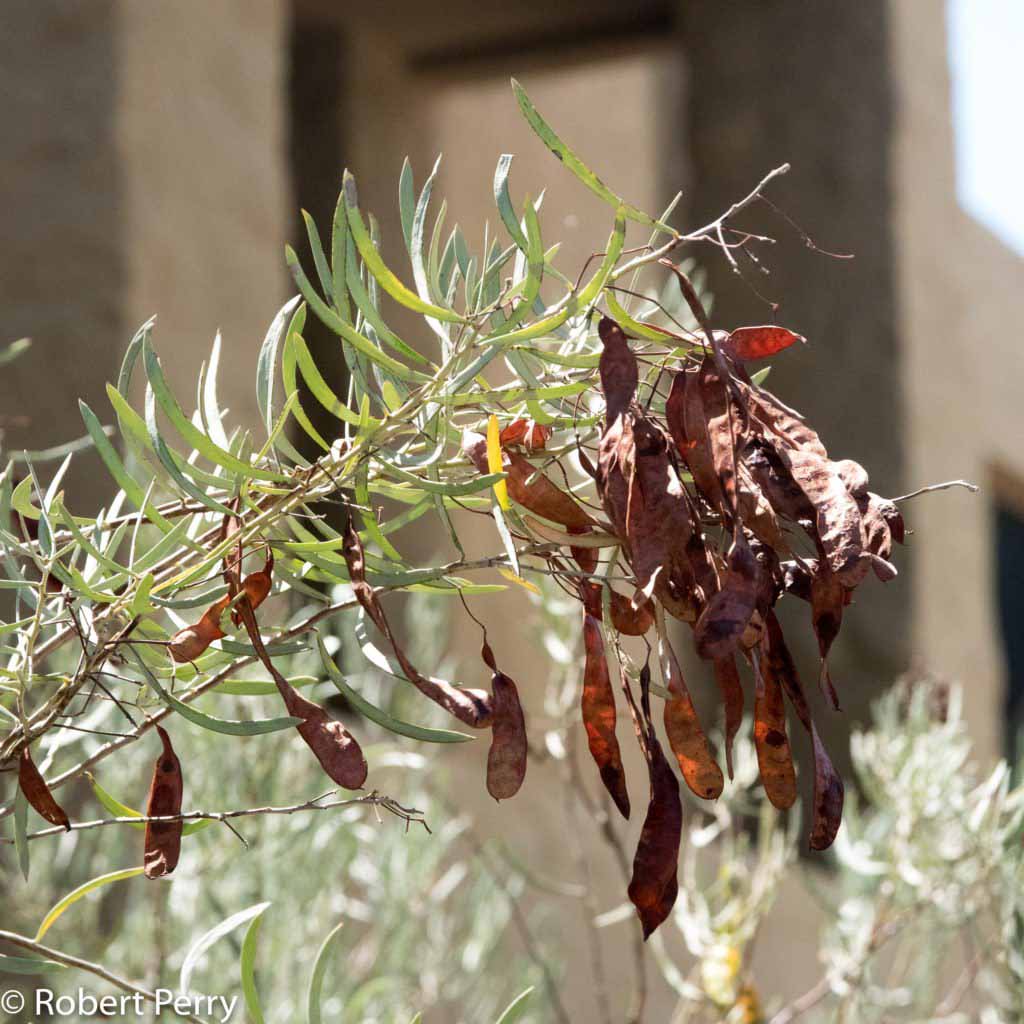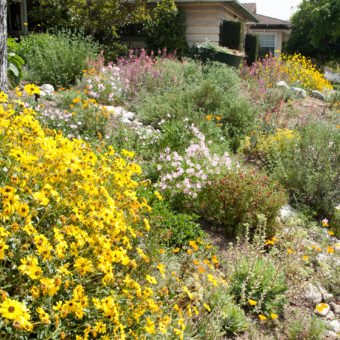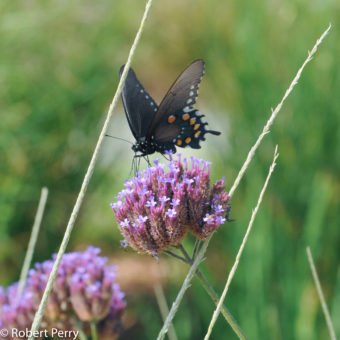Silvery cassia is well adapted to hot and sunny locations on well drained soils and with low amounts of supplemental water during summer. The chart shown below provides a recommended baseline guide to the monthly irrigation schedule and volume of supplemental water needed to maintain healthy growth throughout the average year. It should be noted there are several months indicated by an asterisk (*) when winter rains can provide sufficient moisture and irrigation is not needed. The high and low range of moisture indicates it can grow with varying amounts of water. Established plants grow well on monthly deep water from July to October.
| |
Jan* |
Feb* |
Mar* |
Apr |
May |
Jun |
Jul |
Aug |
Sep |
Oct |
Nov* |
Dec* |
| Runs per Month |
0x to 2x |
0x to 2x |
0x to 2x |
1x to 2x |
1x to 2x |
1x to 2x |
1x to 2x |
1x to 2x |
1x to 2x |
1x to 2x |
0x to 2x |
0x to 2x |
| Inches per Run |
1″ |
1″ |
1″ |
1″ |
1″ |
1″ |
1″ |
1″ |
1″ |
1″ |
1″ |
1″ |
| |
| Inches per Month |
0″ to 2″ |
0″ to 2″ |
0″ to 2″ |
1″ to 2″ |
1″ to 2″ |
1″ to 2″ |
1″ to 2″ |
1″ to 2″ |
1″ to 2″ |
1″ to 2″ |
0″ to 2″ |
0″ to 2″ |
Range of supplemental summer water: 7"-14"
Range of supplemental winter water: 0"-10"
| |
0″-2″ |
0″-2″ |
0″-2″ |
1″-2″ |
1″-2″ |
1″-2″ |
1″-2″ |
1″-2″ |
1″-2″ |
1″-2″ |
0″-2″ |
0″-2″ |
| |
Jan* |
Feb* |
Mar* |
Apr |
May |
Jun |
Jul |
Aug |
Sep |
Oct |
Nov* |
Dec* |
For more information on how to use this Irrigation Schedule and Graph, follow this link.
For information how to calculate your irrigation system’s schedule and precipitation rate, please follow this link.
Cut back as necessary to encourage more compact form (5). This can easily be accomplished by light pruning after winter and spring flowering (5). If flowers are left to develop seed pods, seeds may germinate and grow. Although it is not considered an invasive plant, because of this tendency, it is best not to plant this plant if your landscape is near a wild area (S).
References